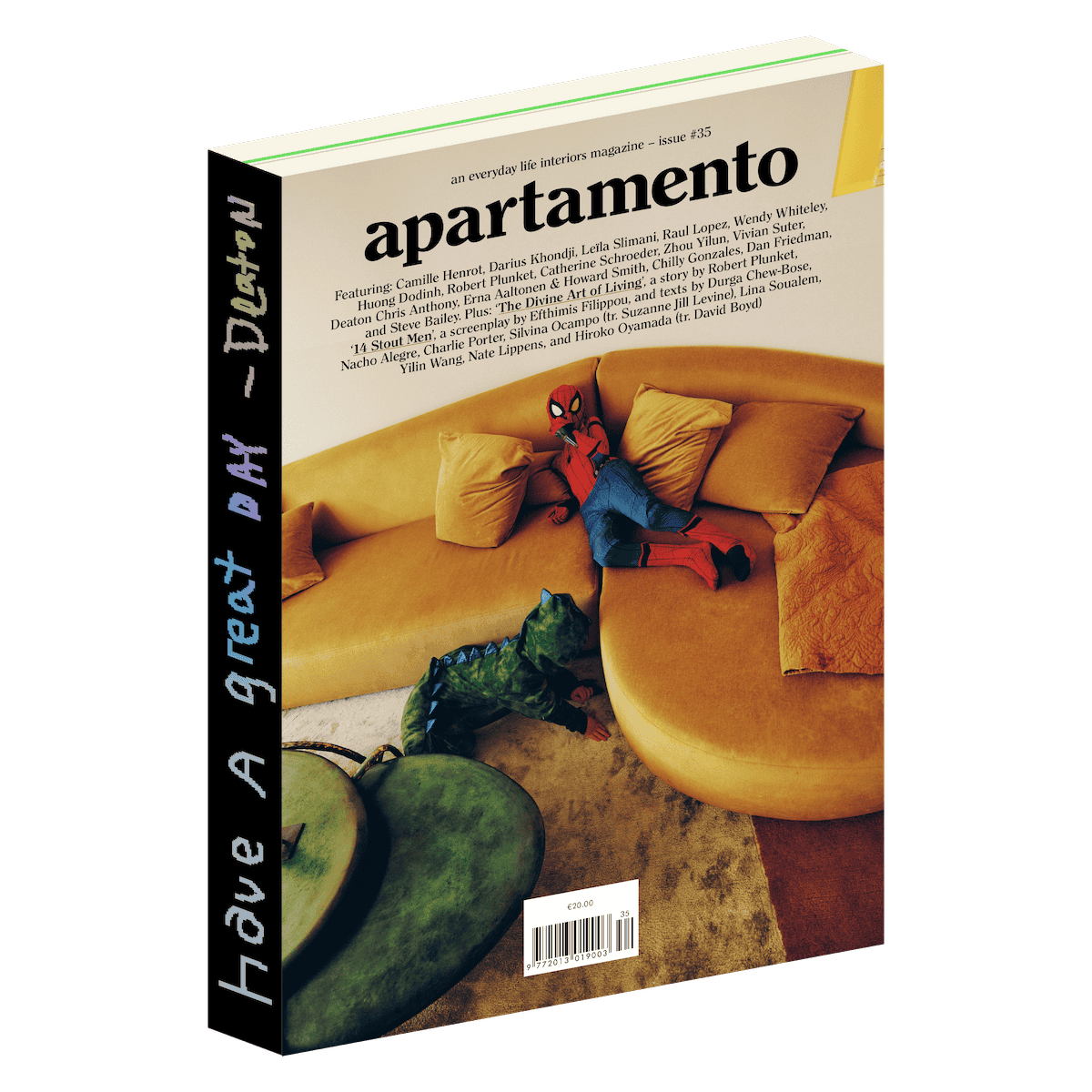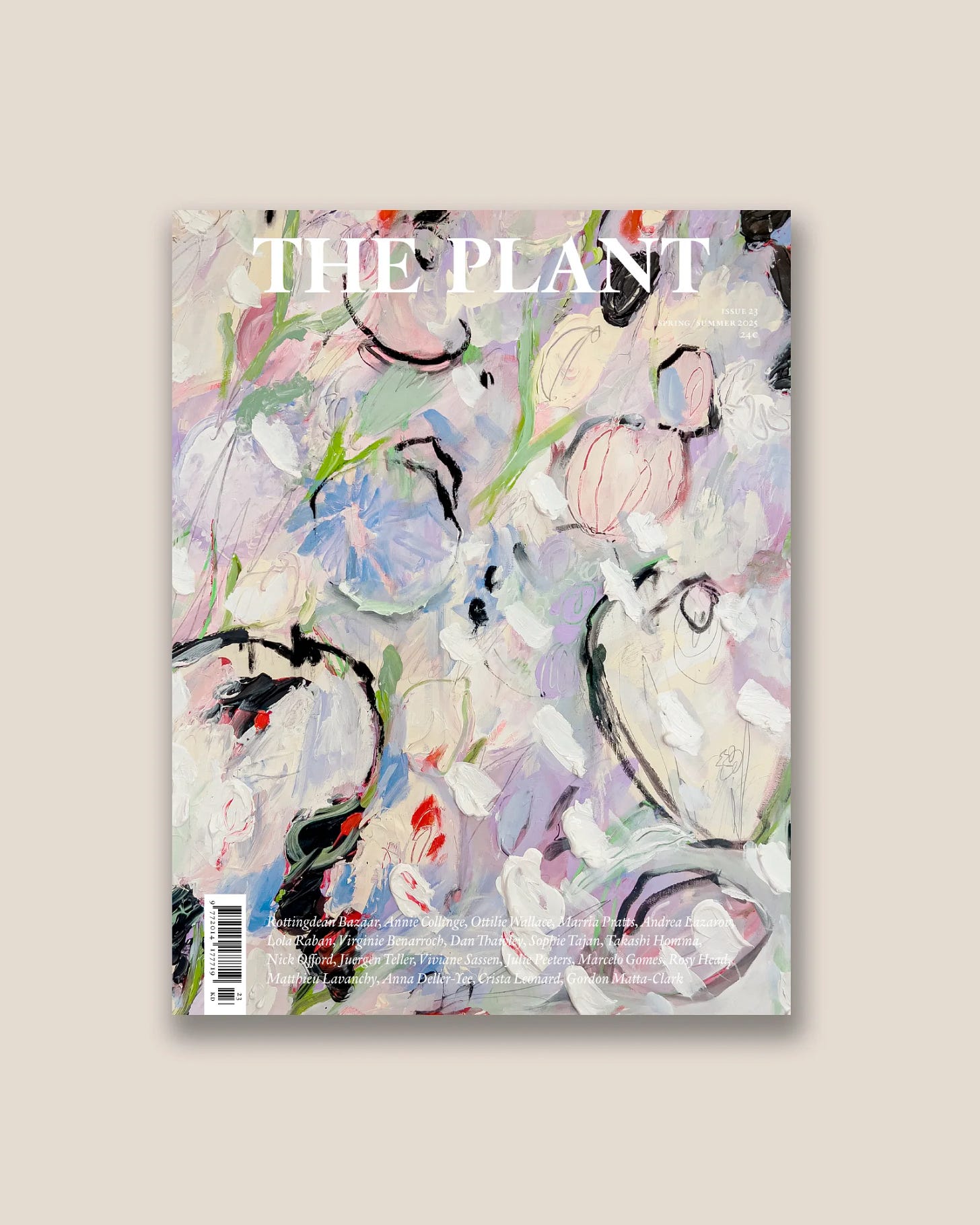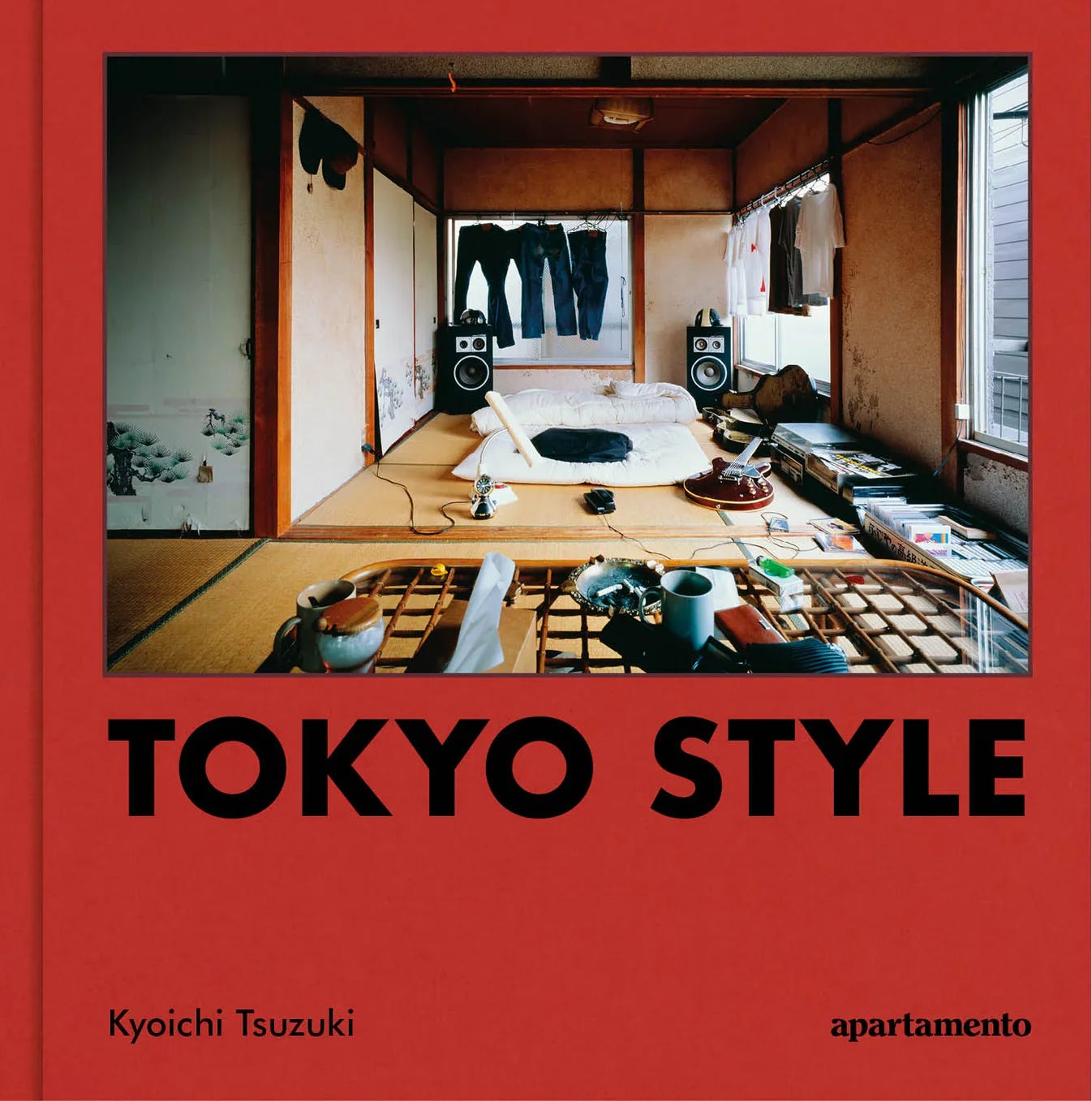Your Coffee Table Called, It Wants More Depth
The list I wish someone gave me when I thought a candle was enough
Summer’s approaching, and with it, a shift in how we move through space. Some of us are opening our doors again backyard brunches, wine before noon, that one friend always late but always worth it. And some of us are staying in. Curtains half drawn. Vinyl humming low. Letting the light move across the room and noticing what it touches.
Either way, the home begins to speak again. And what sits on your table matters.
Coffee table books aren’t decoration. They’re quiet declarations. They hold memory, taste, politics, and refinement. They say what you value without explanation. They hold the room when you’re not in it.
This list is about intention. Each of these books carries weight. Some remind me of who I’ve been. Others, who I’m becoming. All of them feel like a kind of truth.
Here’s what’s on my table right now.
The State of Mind: Palestine
I can’t begin this list without speaking on Palestine.
I don’t know how we’re still expected to carry on like this. How people are supposed to go to brunch, light a candle, open another package while children are being bombed, entire families wiped out, bodies buried under rubble. I don’t know how people sleep at night knowing our taxes are funding a genocide. Knowing silence is complicity.
This book The State of Mind: Palestine feels like breath in a burning room. It’s a collection of vintage photographs, mostly taken before 1948. A visual archive of what was. Families. Architecture. Land. Joy. Palestine as it lived, loved, and thrived before the world decided to look away.
And that’s what makes it so devastating. Because it’s all there the proof. The beauty. The belonging. The undeniable humanity of a people the world has tried to erase
If you call yourself conscious, this book belongs on your table. Not for display for accountability.
You can rest this summer. You can drink your tea. You can host the dinner. But let this book be on the table. Let it interrupt the comfort. Let it live beside the olives and the incense and remind us: Gaza is still bleeding.
To Learn More or Help:
ZalatiMoFarms.com – For every donation, you receive a bottle of olive oil. Proceeds support Heal Palestine, ANERA, UNRWA USA, and MECA. Beauty meets action.
Decolonize Palestine – education from Palestinian organizers
Palestine Children’s Relief Fund (PCRF) – medical aid and support for children
We Are Not Numbers – storytelling platform by youth in Gaza
Afro-Atlantic Histories
As an Afro-Caribbean woman with roots in the Dominican Republic and Honduras, this book isn’t optional. It’s not just a beautiful object. It’s something I return to when I need to remember the full scale of where we come from.
Afro-Atlantic Histories is a massive 400 works from over 200 artists spanning five centuries. It moves across continents and mediums, from Africa to the Americas to Europe and back. You’ll see everything: protest, portraiture, ritual, daily life. It’s a mirror to the fragmentation we carry and the connections we continue to make anyway. This isn’t just about what happened it’s about what’s still echoing through us.
This belongs on your table if you understand that design doesn’t live in a vacuum. That beauty without memory is decoration. That the archive isn’t neutral. It is deep presence.
Apartamento Magazine (May 2025)
Apartamento isn’t new to this. Since 2008, it’s been the gold standard for design that breathes. Not staged. Not sterile. Just real spaces, deeply lived in, rendered with care. Ask anyone in the design world Apartamento is it, honey.
The May 2025 issue is a standout. It’s heavy with New York presence, the kind of names that matter if you know the city, and even more if you know how design moves through it. This issue feels layered part of an international archive, part studio visit, part love letter to the creative process.
What sets Apartamento apart is its editorial restraint. It never tries too hard. The writing is clean, the layouts are thoughtful, and the tone is always two steps ahead of the market. It’s not trying to sell you a lifestyle it’s documenting one.
If you care about space as something more than aesthetics if you see rooms as reflections of psyche, culture, and pace this is a magazine you don’t just flip through. You study it.
Leave it on the table. Not to impress anyone, but to mark where your eye’s been lately.
The Creative Act by Rick Rubin
Yup, I’m going there.
I know this book’s been yelling at you from your Pinterest board for two years now. You’ve seen it reposted, quoted, romanticized. And yeah, maybe it’s been overexposed. But I’m still slapping it on your table because sometimes the thing that’s everywhere is everywhere for a reason. Like The Alchemist. Like Robert Greene’s books. It’s time to reprogram how we were taught to move as artists or what an artist even is.
This one hits when you’re stuck. When the doubt’s too loud. When you’ve spiraled so far into imposter syndrome that even your own taste feels foreign. When you need to remember your ideas don’t have to be loud, or finished, or perfect to be valid.
Rick Rubin moves like someone who’s been listening for a long time and he has. I live for hearing a legend speak on process, and what he actually took from all of it. It reminds you there’s something underneath the noise worth returning to.
It’s not a book of steps or formulas. It’s a way of thinking or maybe a way of unthinking. And when you’re in a moment of pause, or burnout, or shapeshifting? It’s the voice you want nearby. Patient. Clear. No ego.
Keep it close for the mornings when you don’t believe in yourself. Let it sit next to your coffee. Flip to a random page. Let something land. That’s the point.
Cabana Magazine N17
Issue 17 took me places I didn’t know I needed to go: from Cy Twombly’s house in the Italian countryside to Rose Tarlow’s gardens in Provence, to old-world Paris, back through the Yucatán. Every page feels like walking through someone’s dream.
What I love about Cabana is that it never feels performative. Even in its extravagance, it’s quiet. Thoughtful. It’s maximalism with soul pattern, color, and history layered with a kind of emotional intelligence that most interiors miss. You can feel the hands that touched these spaces, the lives that unfolded inside them. It’s sensory. It’s sacred.
When I’m craving beauty that doesn’t flatten into trend, I come here. When I need to remember that abundance can be artful that more doesn’t mean loud I come here.
This issue reminded me that the spaces we build don’t have to make sense to anyone but us. That a room can hold contradictions, opulence, intimacy, and time and still feel like home.
The Plant Magazine (Issue 23)
If you need a bit of plant inspo mixed with fashion and design, this is your go-to.
Issue 23 moves through it all flowers, fruit, trees, parks with no grass, violins, cows, even ghosts. It’s a little strange, but in that cool, intentional way. You’ll open it up thinking you’re just flipping through pretty images and end up rearranging your whole dining table.
What I love is it just pays attention to color, to texture, to how things sit in a space. I leave this one open like a mood board. It shifts how I style the room without me even realizing it.
Women by Nadia Lee Cohen
For the ones who’ve had to shapeshift to survive.
Nadia always makes me recognize my tits. And my rage. And the quiet power in the way I walk down the street when I know I look good but still don’t want to be spoken to.
Women is theatrical and raw, loud and layered. Every character in this book is familiar because we’ve been her. The vixen, the mess, the girl-next-door, the version of ourselves we had to become to stay safe, to be seen, to take up space without apology.
It’s satire. It’s glamour. It’s grief in drag. And it’s brilliant.
Nadia doesn’t just shoot women she documents the performance of womanhood. She shows the work, the play, the exhaustion, the genius of it.
Keep this on your table as a reminder that you’re are exactly who the fuck you think you are.
Issey Miyake by Midori Kitamura & Kazuko Koike
If you really know fashion not hype, not noise you know how deeply we’re rooted in Japanese design. We study the seams. We honor the quiet ones. We light candles for the houses that taught us how to build a silhouette that breathes.
Issey Miyake is one of those names. Like Margiela, Rei, Yohji he didn’t just make clothes. He shaped a way of thinking. This book is a record of that thinking. A sacred archive. It holds the movement, the experimentation, the clarity, and the radical softness that made him who he was.
Miyake believed in freedom. That clothes should move with the body, not restrict it. That pleats could hold memory. That form could be an offering. And he did it all without shouting. That’s power.
Every page of this book is considered. Sculptural. Spiritual. From the fabric development to the performance pieces it reminds you why some work lives forever. Why some names are more than brands.
This belongs on your table for those of us who came up tracing pattern, watching Miyake runway shows late at night, reading old interviews like gospel—this one’s for the altar. With honor.
Tokyo Style by Kyoichi Tsuzuki
This book is what my apartment looks like on a regular Tuesday and I mean that in the best way.
Tokyo Style drops you inside real homes in Tokyo. Not the polished kind. The real kind. Overflowing shelves, cords everywhere, ashtrays, too many mugs, fluorescent lights. It’s chaotic, but there’s a rhythm to it. A logic only the person living there understands.
It made me feel okay about the pile of jackets on my chair. The spice rack that’s never going to match. The fact that sometimes the most beautiful part of a room is the thing you didn’t plan.
Extraordinary Records by Taschen
Last but not least. This one’s for my vinyl heads. The ones who know the record starts before the needle drops. Who’ve spent real time in dusty shops judging covers and being right.
Extraordinary Records is a deep dive into the art of the sleeve. From funk and disco to avant-garde and erotica, it’s all here. Covers that say more than the back of the album ever could.
If vinyl lives in your house like furniture, this belongs on your table.
That’s the table right now.
Take what resonates. Leave what doesn’t.
If this added something to your space or your spirit leave a little something.
🤍













